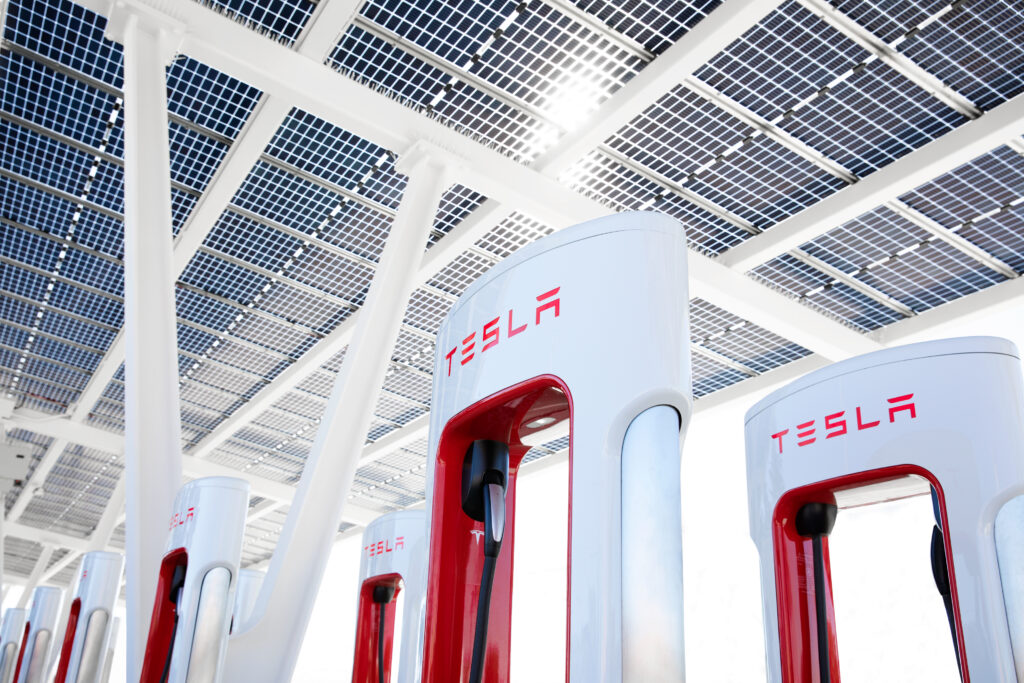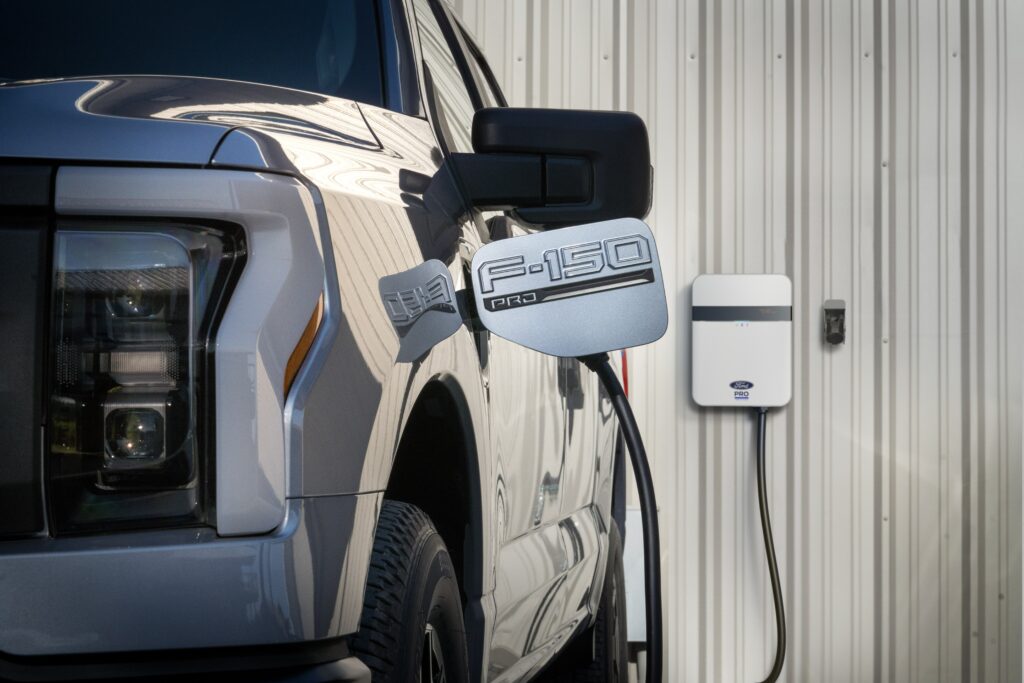Ford (F) is doubling down on its efforts to lure more consumers into the electric vehicle (EV) market with a bold new offer. The automaker has launched a promotion to provide free home chargers and installation to customers who purchase or lease a Ford EV before the end of the year.

This initiative, which started on October 1, is aimed at addressing one of the major concerns of potential EV buyers: charging convenience.
Why Ford’s Free Charger Program is a Game-Changer
Ford’s free home charger program is a significant step in removing one of the biggest barriers to EV adoption—charging infrastructure. Ford CEO Jim Farley noted, “There’s no bigger obstacle than charging,” emphasizing that the ease of charging is a key issue for many consumers.
The new program applies to customers purchasing the Mustang Mach-E, F-150 Lightning, or E-Transit Cargo van, all of which are part of Ford’s growing EV lineup.

The offer includes Ford’s $1,310 Charge Station Pro, a Level 2 charger, and covers the cost of standard installation. This installation includes up to 60 amps of power and 80 feet of wiring, which is typically sufficient for most homes.
Buyers who cannot install a home charger due to living arrangements—such as apartment dwellers—won’t miss out, as Ford is offering a $2,000 cash incentive instead.
Addressing ‘Change Anxiety’: The Real EV Barrier
While “range anxiety” is often cited as a reason for hesitancy around EVs, Ford’s research shows the bigger issue is what they call “change anxiety.” Many consumers are unsure about how different EV ownership might be from driving a gas-powered vehicle.
Ford’s aim with the free home charger offer is to make the switch as seamless as possible by showing that charging at home can be as easy as plugging in a smartphone.

Martin Delonis, Ford’s senior manager of strategy, explained that most EV drivers charge their vehicles at home over 80% of the time, which is a convenience that new buyers often overlook.
The free home charger removes the need to rely heavily on public charging stations, making the daily use of an electric vehicle more practical and stress-free.
Expanding Charging Access with Tesla Partnership
Ford’s commitment to improving charging access doesn’t stop with home chargers. In May 2023, Ford became the first major automaker to partner with Tesla (TSLA) to give its EVs access to Tesla’s extensive Supercharger network.
This partnership will make charging on long road trips much easier for Ford EV owners, especially when it rolls out fully in 2025, with Ford vehicles expected to feature compatible Tesla charging ports.

With Tesla’s Supercharger network already covering large swaths of North America, this move by Ford is crucial in easing concerns about finding charging stations on the road. Combined with the convenience of home charging, Ford’s strategy aims to provide a comprehensive solution to charging, whether customers are on the go or at home.
The State of Ford’s EV Sales: Growth Amid Challenges
Despite Ford’s ambitious plans, the company faces financial headwinds in its EV division. Ford is projected to lose as much as $5 billion on its electric vehicle business in 2024. However, the company remains undeterred.
Ford’s EV sales have grown by 72% year-over-year, with the company selling approximately 44,000 EVs in the first half of 2024. This growth makes Ford the second-largest EV seller in the United States, trailing only Tesla, which sold a staggering 831,000 vehicles in the same period.

Ford’s strong showing in the EV market is a testament to the company’s commitment to electrification despite the financial hurdles. In fact, the company is actively working to streamline its EV production and lower costs, recently canceling a planned three-row electric SUV to save nearly $1.9 billion.
The Ford Power Promise: A Comprehensive EV Strategy
Ford’s “Power Promise” initiative is more than just a free home charger—it’s part of a broader strategy to reassure consumers about EV ownership. The automaker is focusing on five key areas: Range, Charging, Battery Health, Home Charging, and Timing.
In addition to the free charger, Ford provides 24/7 call and text support for new EV owners, addressing questions about everything from charging to battery care. Ford also highlights its eight-year, 100,000-mile battery warranty to ease concerns over battery longevity.

The company is also ramping up production of Tesla-compatible charging adapters, allowing Ford EV owners to access the Tesla Supercharger network ahead of the 2025 rollout. Ford’s BlueOval Charge network, which boasts over 75,000 chargers in North America, further extends the convenience and ease of charging, offering more options for drivers who may not always have access to home charging.
Looking Ahead: Ford’s Future in the EV Market
Ford’s free home charger initiative comes at a pivotal moment for the automaker as it looks to scale its EV business. Although the company is facing significant losses in its electric division, the introduction of incentives like the Ford Power Promise highlights its determination to win over consumers who may still be on the fence about switching to electric vehicles.

The challenges of the EV market are not unique to Ford, as automakers across the board are struggling to balance production costs with consumer demand. However, with programs like free home charging and the expanded partnership with Tesla, Ford is positioning itself as a leader in the effort to make EVs more accessible and attractive to the average driver.
The combination of practical incentives, improved charging infrastructure, and growing EV options shows that Ford is fully committed to the future of electrified mobility.




